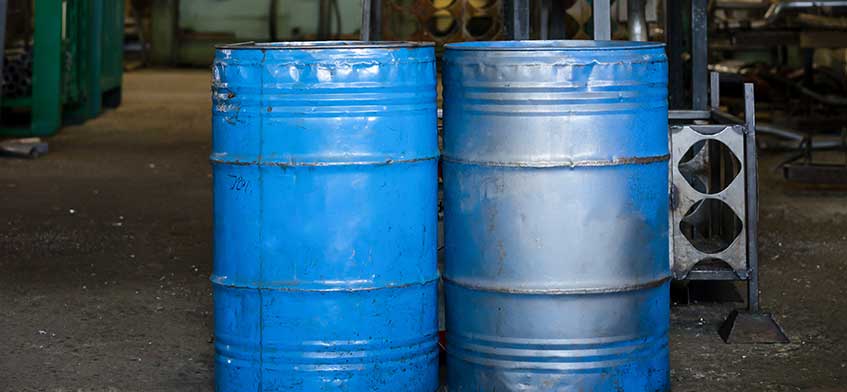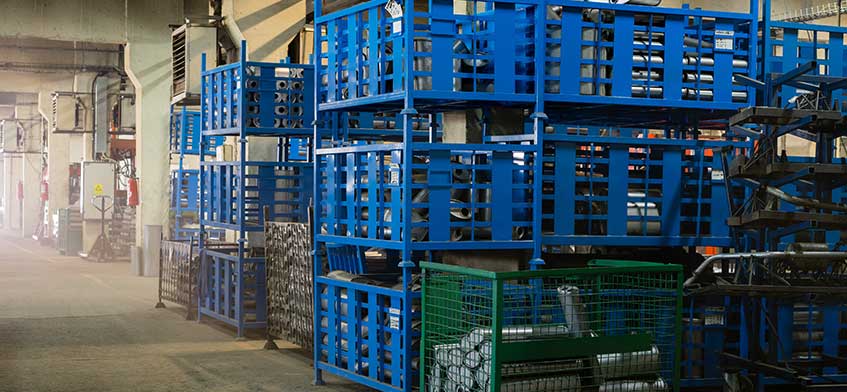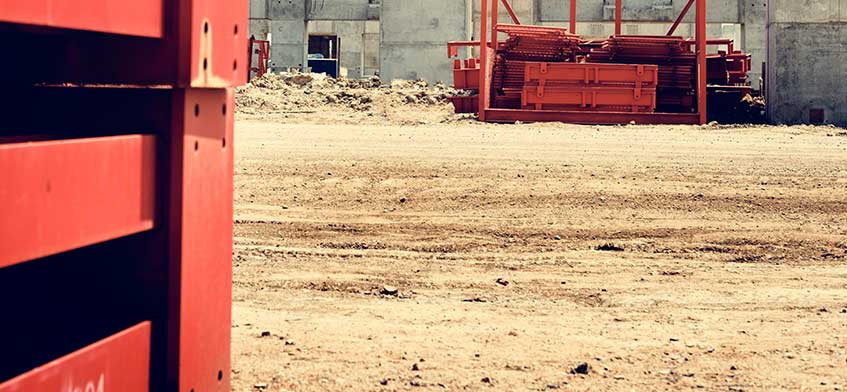Case Studies

Closure of a Plating Facility in Mexico
An international corporation decided to close down a 215,000 sq.ft. plating facility in Mexico. Adastra was contracted to
coordinate all the environmental related activities and interaction with government agencies. An environmental remediation plan was prepared including the installation
of groundwater monitoring wells and collection of clearance samples.
The closure plan prepared a gradual decommissioning of production lines. Adastra supervised the removal of the hazardous plating baths and the purging of process
pipelines, the removal, destruction and disposal of contaminated equipment, hoses, pipelines and exhaust vents. Once all process equipment was removed, Adastra
completed the environmental remediation process.
In total, Adastra removed approximately 400 tons of contaminated soil, 90 tons of contaminated concrete, 50 tons of contaminated equipment and 7 tons of toxic sludge.
The entire environmental closure process took approximately 9 months.
Adastra completed the environmental closure process with the filing of the final Facility Closure Report (in Spanish) with the Mexican Environmental Agency. Adastra
selected and contracted all excavation contractors, drillers, environmental laboratories, hazardous waste transporters and disposal sites.

CLOSURE OF AN AUTOMOTIVE INDUSTRY SUPPLIER IN MEXICO
An international automotive industry supplier hired Adastra to evaluate the environmental condition of a Mexican facility. The
facility had a history of environmental issues.
The Phase I assessment indicated surface staining and evidence of hydrocarbon contamination potentially affecting the soil below the concrete slab of the injection
molding area, the hazardous waste storage, the oil storage, the compressor area and a mechanical room.
A Phase II sampling confirmed subsurface soil contamination in all of those areas. Adastra was hired to prepare the environmental remediation plan and to complete the
environmental closure of the facility. The remediation included excavation and removal of approximately 75 tons of contaminated soil and concrete. The remediation
procedure was successfully completed in six weeks. The environmental agency accepted the Facility Closure Report with no further actions to complete.

PHASE I PORTFOLIO – NINE SITES
Adastra was selected to complete a due diligence portfolio of nine large industrial facilities in Texas with an average size of 17
acres each. Adastra presented the best offer with the shortest time to complete the assessments.
The work was completed by various assessors, however, the client was happy to receive a uniform report format for all of them. The client sent a team of observers to
the various sites in order to have the opportunity to ask questions on the spot about our field observations. Adastra provided valuable information for our client in
this due diligence project.

MULTI-SITE EHS COMPLIANCE AUDITS
Adastra was selected to provide Mexican bilingual auditors to complete a portfolio of approximately 20 full EHS audits in Mexico
over a period of three years.
The project included auditing both Mexican regulatory framework and corporate standards. Our auditors were experienced to identify non-compliance issues in the field
and knowledgeable of the Mexican regulations to be able to evaluate permits, records and EHS documents.
The audits included interviews with selected key personnel at the various locations. Our bilingual personnel were able to conduct the interviews without any assistance
and were able to interact with Mexican staff as well as corporate English-speaking staff. The audit reports were all prepared in English.

ENVIRONMENTAL REMEDIATION – SOLVENT CONTAMINATION
During a Phase I assessment, Adastra identified a significantly stained exterior area with a notorious solvent odor near a spill containment pit of the hazardous waste
storage room. Rather than going for the Phase II investigation, the client opted to go straight for the remediation. Adastra prepared an estimated budget with some
project constraints and proceeded with the remediation. The remediation was planned to be executed in “stages”.
A stronger solvent odor was noted once the top concrete slab was removed. It was observed that the underground spill containment pit had not been built correctly and
had large gaps between the walls and the bottom of the pit. The stained area had been incorrectly used to wash process equipment with solvents allowing the discarded
product to discharge into the secondary containment pit that leaked to the subsurface soil. The personnel cleaning the equipment in this area never checked if the
discarded contaminated solvent was reaching and remaining in the secondary containment pit.
Adastra identified significant subsurface soil contamination. The sandy soil allowed the contamination to migrate down 18 feet until a natural clay barrier was
reached. Adastra removed approximately 200 cubic yards of contaminated soil, clearance samples confirmed the successful completion of the remediation and the
excavation was backfilled.

MULTI-STATE ENVIRONMENTAL PERMIT UPDATE
After a large worldwide corporate acquisition, Adastra was contracted by a corporate client to oversee the environmental permit migration for 12 facilities located in
eight states in Mexico.
Adastra audited all facilities to review existing environmental permits and identify any new permit needs under current process conditions. Adastra prepared a permit
Matrix for each facility including Federal, State and Local environmental permits and registrations.
Adastra confirmed the permit migration requirements with the involved agencies and prepared a plan of action for each facility identifying which permits required a new
application and which could be updated with a simple letter of notification. In all cases, the former permits were no longer valid. Adastra successfully completed the
permit migration under the new company name for all sites.
Environmental permits are not transferable in Mexico and new permits are typically required upon a facility name change.

FIRE DAMAGE REMEDIATION – HAZARDOUS WASTE
As the corporate environmental consultant in Mexico of an international corporation, Adastra was called upon to evaluate the environmental damage of a site that had a
devastating fire that affected the entire 163,000 square feet building structure.
Adastra identified various former process areas with significant hydrocarbon and diesel releases that resulted from burned down process equipment and damage to the diesel
storage area.
Adastra prepared a plan of action and worked closely with the insurance company and its demolition contractor to first remove the contaminated concrete and soil of
environmentally affected areas. Waste oil and fuel releases are considered hazardous waste releases in Mexico.
Contaminated concrete and soil was separated and properly disposed as a hazardous waste. Adastra supervised and executed all environmental remediation and hazardous
waste disposal activities including clearance sampling. Adastra was also responsible to represent the site owner (corporate client) to oversee general demolition and
non-hazardous waste disposal activities conducted by the contractor of the insurance company.

FIRE DAMAGE DISPOSAL – NON-HAZARDOUS SOLID WASTE
A historical fire caused significant damage to an approximately 500,000 square feet building in Mexico.
Adastra was hired to supervise the disposal of all non-hazardous fire damaged remains and demolition debris. The objective was to follow every single disposal truck to witness and document proper disposal in order to eliminate an improper waste disposal liability.
Over a period of six months, Adastra’s team followed and documented proper disposal of approximately 2000 truck-loads of demolition debris, 500 truck-loads of scrap metal and 160 roll-off containers of trash. Truck loads and roll-off containers were between 20 and 30 cubic yards each. The site was leveled to the ground.
